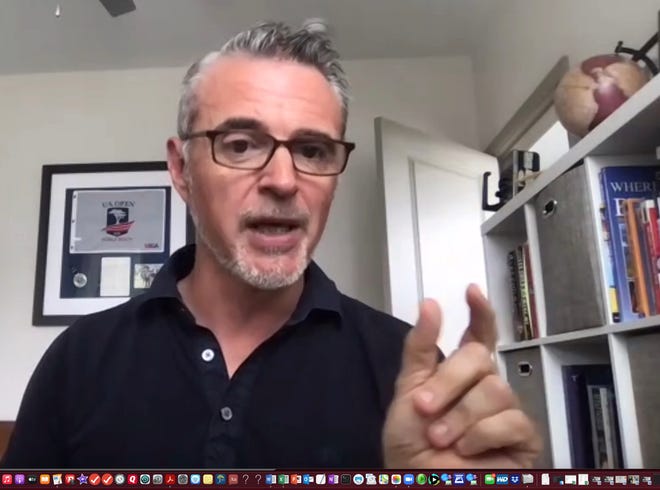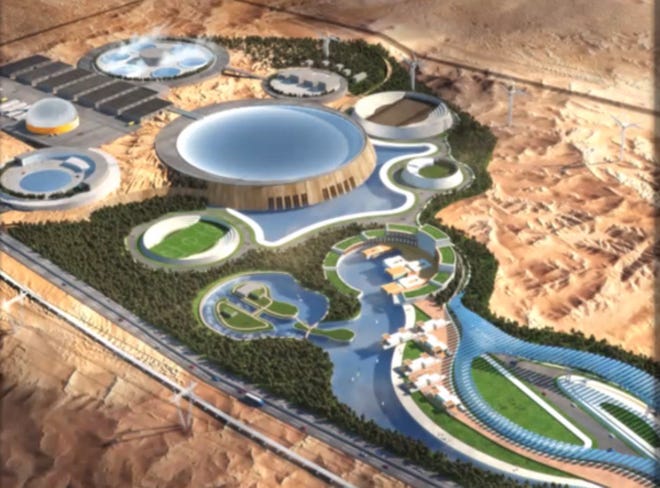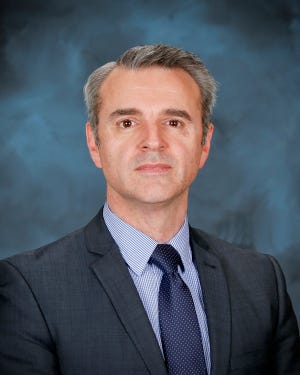ORNL section head promotes the advantages and safety of nuclear energy
Andrew Worrall, Assistant Director of Gateway for Accelerated Innovation in Nuclear (GAIN) and Section Head at Oak Ridge National Laboratory, recently presented the clean power source comparisons mentioned in the following scenario during a Friends of ORNL (FORNL) meeting.
For example, let’s say you are concerned about man-made climate change and want to move to a city that has a clean source of energy.
Every city you examine is powered by a carbon-free source that produces nearly 470 billion kilowatt hours over its lifespan. Concerned about taxes and utility bills, you are particularly interested in the relative cost of the three sources (in 2009 dollars, according to a study), which include land price, equipment, finance, construction, labor, government fees, and fuel.
A city is powered by a solar array that costs $ 28 billion and produces electricity only 30% of the year because clouds and night time prevent the sun from shining on the solar panels indefinitely. The array spans 62 square miles.
Another city is powered by General Electric wind turbines, which cost $ 11 billion. The rotating turbine blades generate electricity only 35% of the year, as the wind does not always blow or blows so strongly that the wind farm has to be shut down. The farm occupies 36 square miles of land, which is the size of downtown Knoxville.
The third option is a city powered by a $ 7 billion nuclear power plant that occupies only six to ten square kilometers. It generates electricity 92% of the year; the rest of the time the system is idle for maintenance and refueling. According to several studies, nuclear power costs less, has a much smaller footprint and is more reliable than renewable energy sources.
“More than 50% of the clean energy in the US comes from nuclear power,” said Worrall.
“There has been a lot of talk about the resurgence and ‘second coming’ of nuclear energy. It never quite materialized. Now we’re on the threshold where we’ll get into a much bigger mess if we don’t do anything. “
He was referring to the climate crisis marked by forest fires in the American west, floods in Europe, freezing temperatures that led to a massive blackout in Texas in mid-February, and temperature records in the Pacific Northwest and Canada (121 degrees Fahrenheit).
Worrall quoted the United Nations Secretary-General Ban Ki-moon as saying at the 2014 Summit of Climate Leaders, “Climate change is the greatest threat to a sustainable future. At the same time, however, addressing the climate challenge offers a unique opportunity to promote prosperity, security and a better future for all. “
“When Florida and Texas had hurricanes in recent years, there was only one form of energy left and that was nuclear power,” said Worrall. “Solar panels got no sun and wind turbines don’t work well when the wind is blowing at 160 miles per hour. They had to be closed. Coal stored outside of coal-fired power plants gets wet quickly and doesn’t burn until it’s dried. “
Noting that people in many countries do not have access to clean energy and water, Worrall said nuclear energy can be used to generate electricity as well as desalination of seawater to make clean drinking water. He added that nuclear energy will be useful “to decarbonise the transportation system” by providing electricity to charge electric cars and making hydrogen from water for hydrogen fuel cells in vehicles.
Today 440 nuclear power plants in 30 countries supply 15% of the world’s electricity. Nuclear power plants have been in operation around the world for the equivalent of 18,000 years. In the United States, 20% of our electricity comes from 94 reactors in 28 states, and in France 80% of our electricity comes from nuclear power plants. 58 nuclear power plants are under construction worldwide.
“China has planned or is building 30 nuclear power plants and plans to build 250 reactors over the next 30 years,” said Worrall.
Worrall offered some pictures and numbers to put the issue of nuclear waste in perspective. He said all of the nuclear waste produced in the US over the past 60 years would fit on the soccer field of the University of Tennessee’s Neyland Stadium at a depth of 12 feet. By comparison, while American nuclear power plants produce 2,000 tons of solids annually, American coal-fired power plants produce 400 million tons of solids, 2 billion tons of carbon dioxide and 25,000 tons of radiation-emitting waste annually.
Worrall, a native of England who has been with the ORNL since 2012, recommended that the United States keep using the current fleet of light water reactors, build new ones on time and under budget, and then build advanced reactors in 15 to 20 years, such as the molten salt reactor, who did pioneering work in the ORNL decades ago.
He said he was interested in seeing the operation of the pebble-fueled Kairos test reactor with a molten salt coolant slated for East Tennessee Technology Park in Oak Ridge. He added that he would love to see a small modular reactor at the Tennessee Valley Authority’s Oak Ridge site, where the Clinch River Breeder Reactor was set to be built decades ago.
He acknowledged that another nuclear accident in Fukushima would likely set new nuclear power plant development back due to negative reactions from the public, politicians and investors. He pointed out that the 2011 accident, as a result of an unforeseen tsunami in Japan, led Germany to shut down all of its reactors, “a stupid decision and they are paying for it now”.
He claimed the Japanese made several mistakes (buried emergency cooling systems where they could be flooded and failed to install the recommended mitigation measures), that residents returned to the exclusion zone, and that only three men were killed in the accident – two drowned and one fell from a crane.
“Many more people die in accidents in the oil, coal, gas and chemical industries,” he said.






Comments are closed.